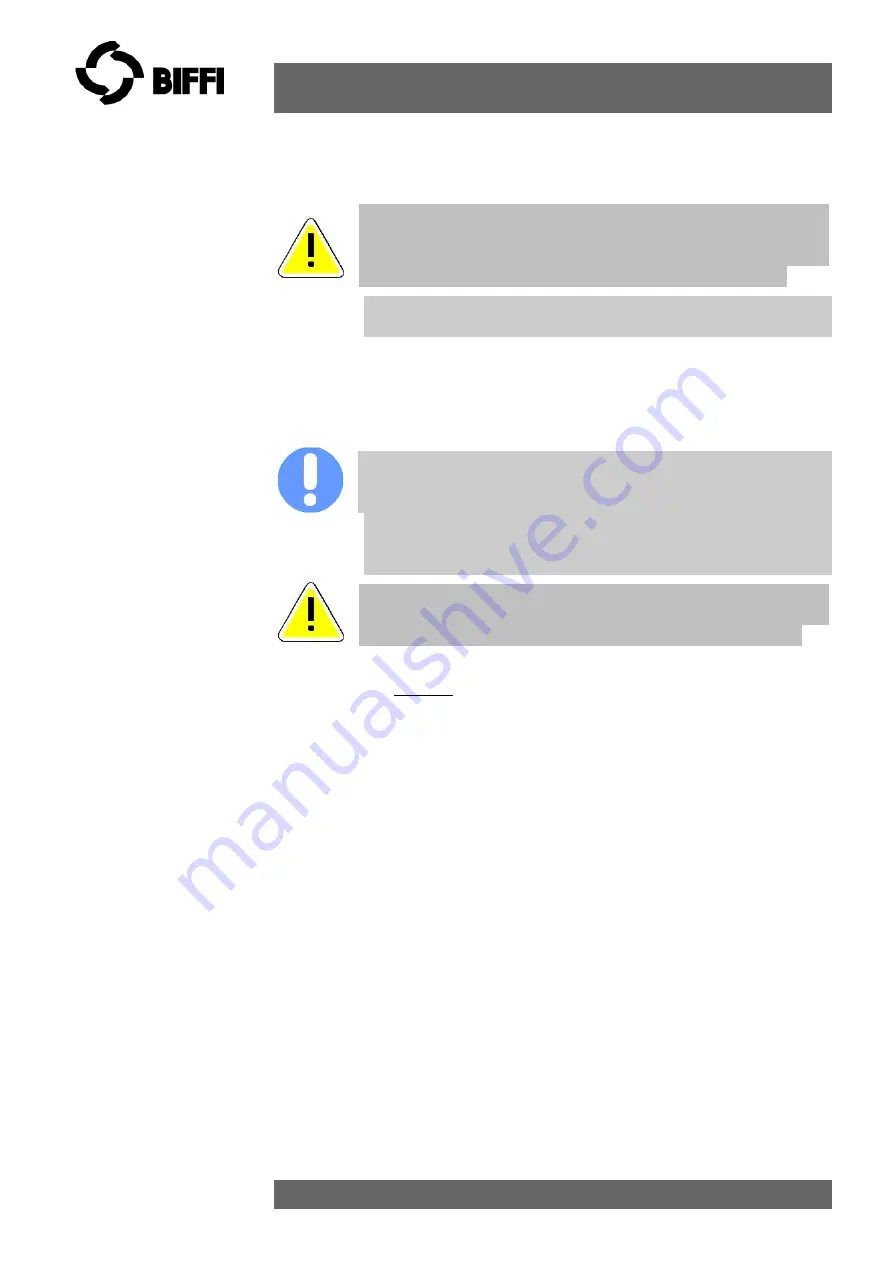
OLGAS-H
– High pressure spring return hydraulic actuator
Use and maintenance manual
© Copyright by BIFFI Italia. All right reserved.
Pag. 33
Contents may change without notice
5
Maintenance
Before carrying out any maintenance operation, it is
necessary to close the hydraulic feed line and exhaust
the pressure from the actuator cylinder and from the
control unit, to ensure safety of maintenance staff
Installation, commissioning and maintenance and
repair works should be carried out by qualified staff.
5.1 PERIODIC MAINTENANCE
OLGAS actuators are designed to operate long-term in heavy-duty
operating conditions, without maintenance needs.
Periodicity and regularity of inspections is particularly
influenced by specific environmental and working
conditions.
They can be initially determined experimentally and
then be improved according to actual maintenance
conditions and needs.
Before start up and afterwards every 6 months check
accumulator pre-charging pressure (if present : please
check the value from technical data-sheet supplied)
Anyway every 2 years of operation the following is recommended:
❑
Check that the actuator operates the valve correctly and with the
required operating times. If the actuator operation is very infrequent,
carry out a few opening and closing operations with all the existing
controls (remote control, local control, emergency controls, etc.), if
this is allowed by the conditions of the plant.
❑
Check there are no hydraulic or pneumatic leakages. If necessary
tighten the nuts of the pipe-fittings..
❑
Check oil level (Pict. 13) into the hydraulic control unit (see chapt.
5.1.1)
❑
Check the actuators did not undergo accidental damage with oil
leakages found on site (Sect. 4.1.1).
❑
Check that improper closing of control-group cover (if present) did
not produce the presence of condensation on it.
❑
Check the integrity of worn out parts (gaskets, pads etc.).
❑
If there is an oil filter on the actuator, bleed the condense water
accumulated in the cup by opening the drain cock. Disassemble the
cup periodically and wash it with soap and water; disassemble the
filter: if this is made up of a sintered cartridge, wash it with nitrate
solvent and blow through with oil. If the filter is made of cellulose, it
must be replaced when clogged.
















































